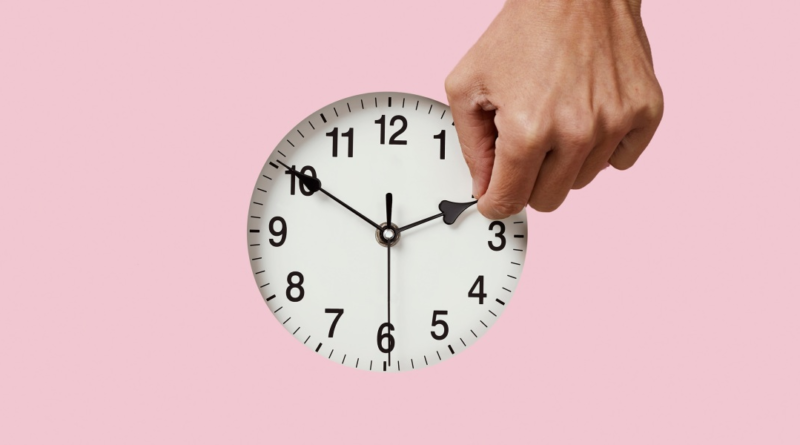Four ways to adjust to Daylight Saving Time ending, according to a sleep expert
I love most things about fall: colorful leaves, picking pumpkins, my birthday. Something I don’t love: the time change. I realize we “gain” an extra hour of sleep (well, those of us without small children); however, I’m not a fan of it being dark at four o’clock in the afternoon.
What began as a way to reduce use of electricity in the early 1900s is now criticized due to its impact on public health and safety. In 2020, the American Academy of Sleep Medicine released a statement in support of a national fixed year-round standard time, which “aligns best with human circadian biology and provides distinct benefits for public health and safety.”
Research has shown that the annual fall back to standard time every autumn includes “increased risk of adverse cardiovascular events, mood disorders, and motor vehicle crashes.” The misalignment with our bodies’ internal clocks has been associated with “increased cardiovascular disease risk, metabolic syndrome, and other health risks,” according to the American Academy of Sleep Medicine.
So much so that the Senate has proposed doing away with Daylight Saving Time altogether with its Sunshine Protection Act, which would make Daylight Saving Time permanent. If the bill passes in the House and is signed into law by President Joe Biden, it would go into effect in November 2023.
Until then, Dr. Shelby Harris, a licensed clinical psychologist and author of The Women’s Guide to Overcoming Insomnia, shares a few ways to help your mind and body adjust to the time change.
Start going to bed earlier
If you want to adjust yourself (or your kids) to the time change in advance, Harris recommends going to bed later in the days leading up to it. For example, if your normal bedtime is 10 p.m., try going to bed at 10:20 on Thursday and then 10:45 on Friday.
“That way on Saturday night when we change the clocks back, you do 15 minutes later, but it ‘magically’ becomes your original bedtime in the week before the change,” says Harris. “This works well for kids especially, but not everyone has the bandwidth to do it.”
Let the sunshine in
“Get as much daylight as you can in the morning and during the day to help ease the adjustment,” suggests Harris. “Light exposure in the morning and afternoon as the sun goes down earlier helps to get your circadian rhythm better aligned and also keeps you more energized in the afternoon.”
Revamp your routine
“Try to adjust meals, exercise, and activities 15 to 20 minutes later as well when you’re adjusting the bedtime,” says Harris. “Bedtimes and wake times aren’t the only cues for our body’s clock. Activities like exercise and eating set our rhythm as well.”
To help you sleep even better at night, Harris suggests dimming lights one hour before your desired bedtime; limiting caffeine within eight hours of bedtime; and limiting large meals, alcohol, liquids, and hard exercise to three hours within bedtime.
Keep doing what you’re doing
“If you don’t want to do anything to adjust in advance, no problem,” she says. “You’ll adjust within five to seven days if you keep a consistent bed and wake time as best as possible and are mindful about light exposure. But don’t bother with melatonin here. If your sleep doesn’t resolve in a week or two and you’re having trouble with sleep quality and/or quantity, talk with a sleep doctor to get your body clock back on track. We might suggest melatonin, but it depends on the person and there’s usually no need for it.”
Sign up for the Fortune Features email list so you don’t miss our biggest features, exclusive interviews, and investigations.



